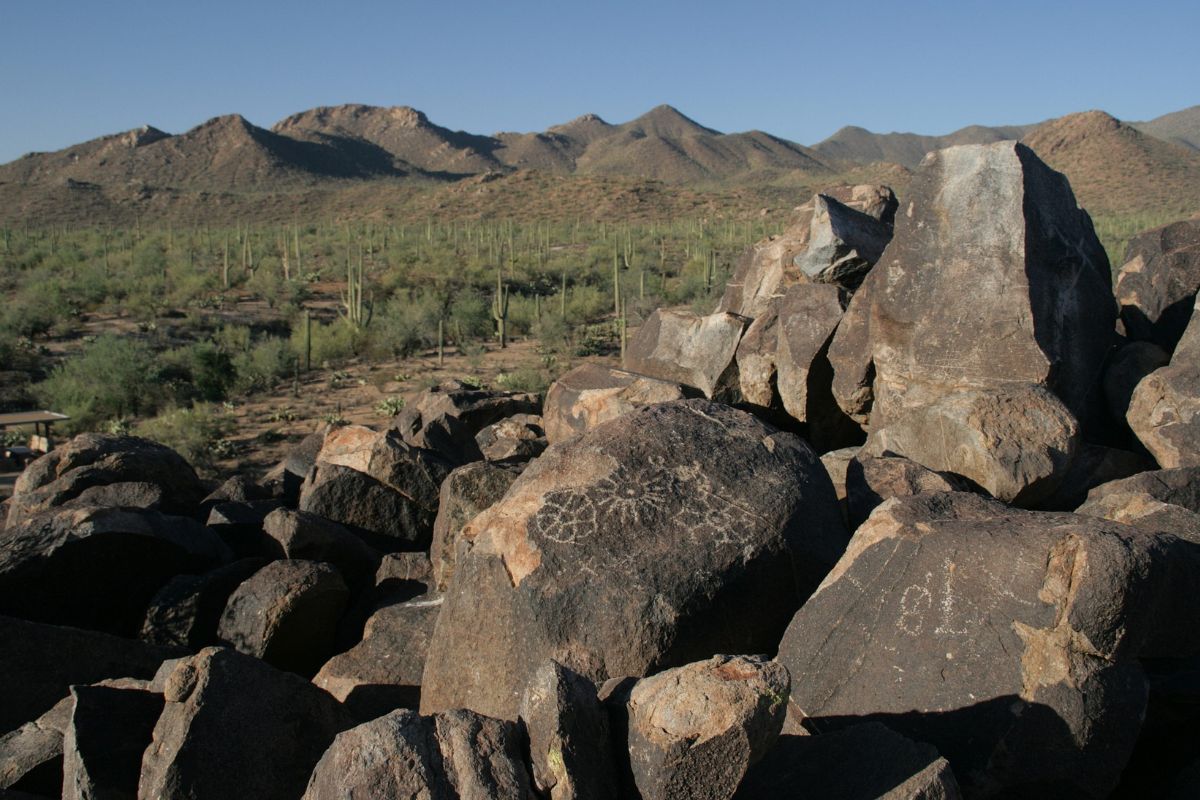Secrets Of Arizona’s Ancient Signal Hills

Have you ever wondered about the hidden stories behind Arizona's Signal Hills? These ancient landmarks have fascinated travelers for generations. Signal Hills, scattered across the state, served as communication points for Native American tribes. They used these elevated spots to send smoke signals, warning of danger or sharing important news. Today, these hills offer more than just historical significance. They provide breathtaking views, perfect for hiking and photography. Whether you're a history buff or an outdoor enthusiast, exploring Arizona's Signal Hills can be a rewarding experience. Ready to uncover the secrets of these ancient communication hubs? Let's dive in!
Discovering Arizona's Ancient Signal Hills
Arizona, known for its stunning landscapes and rich history, hides a lesser-known secret: ancient signal hills. These hills served as communication points for indigenous tribes, allowing them to send messages across vast distances. Let's explore some of these fascinating locations.
1. Signal Hill in Saguaro National Park
Signal Hill, located in Saguaro National Park, is famous for its ancient petroglyphs. These rock carvings, created by the Hohokam people, offer a glimpse into the past.
- Petroglyphs: Over 200 rock carvings depicting animals, humans, and geometric shapes.
- Hiking Trails: Easy trails leading to the top, offering panoramic views of the desert.
- Wildlife: Spot desert creatures like lizards, birds, and the iconic saguaro cactus.
2. Picacho Peak
Picacho Peak, a prominent landmark between Phoenix and Tucson, was used for signaling by Native American tribes. Its unique shape made it an ideal spot for communication.
- Historical Significance: Site of the westernmost battle of the Civil War.
- Hiking Challenge: Steep trails with cables to assist climbers.
- Spring Wildflowers: Vibrant blooms covering the landscape in spring.
3. Piestewa Peak
Piestewa Peak, formerly known as Squaw Peak, is a popular hiking destination in Phoenix. It was used by the Hohokam people for signaling.
- Urban Oasis: Located in the heart of Phoenix, offering a quick escape to nature.
- Challenging Hike: A steep, rocky trail leading to the summit.
- Sunset Views: Stunning views of the city skyline at sunset.
4. South Mountain
South Mountain, the largest municipal park in the U.S., has a rich history of signaling. The Hohokam people used its peaks to communicate with nearby villages.
- Petroglyphs: Numerous rock carvings scattered throughout the park.
- Scenic Drives: Drive to the top for breathtaking views of the valley.
- Mountain Biking: Popular trails for mountain biking enthusiasts.
5. Mount Graham
Mount Graham, located in southeastern Arizona, was a sacred site for the Apache people. Its high elevation made it an ideal spot for signaling.
- Astronomical Observatory: Home to the Mount Graham International Observatory.
- Diverse Ecosystem: Unique flora and fauna, including the endangered Mount Graham red squirrel.
- Camping: Numerous campgrounds offering a peaceful retreat.
6. Mount Lemmon
Mount Lemmon, part of the Santa Catalina Mountains, was used by the Hohokam for signaling. Its cooler climate and lush forests provide a stark contrast to the desert below.
- Skiing: The southernmost ski resort in the U.S.
- Scenic Byway: A picturesque drive with numerous lookout points.
- Hiking Trails: Trails ranging from easy walks to challenging hikes.
7. Chiricahua National Monument
Chiricahua National Monument, known for its stunning rock formations, was used by the Chiricahua Apache for signaling. The unique landscape provided natural lookout points.
- Rock Formations: Eerie, towering rock spires known as "The Wonderland of Rocks."
- Bird Watching: A haven for bird enthusiasts with over 200 species.
- Historic Sites: Visit Faraway Ranch, a historic homestead within the monument.
8. Superstition Mountains
The Superstition Mountains, steeped in legend and mystery, were used by the Hohokam for signaling. These rugged peaks are also famous for the Lost Dutchman's Gold Mine legend.
- Hiking Trails: Trails for all skill levels, including the challenging Siphon Draw Trail.
- Ghost Stories: Tales of lost gold and mysterious disappearances.
- Wildlife: Home to diverse wildlife, including bighorn sheep and javelinas.
9. Black Mesa
Black Mesa, located in northeastern Arizona, was a significant signaling point for the Hopi and Navajo tribes. Its flat-topped summit provided a clear vantage point.
- Cultural Significance: Sacred to the Hopi and Navajo people.
- Coal Mining: Site of extensive coal mining operations.
- Stunning Views: Panoramic views of the surrounding desert landscape.
10. Red Mountain
Red Mountain, near Flagstaff, was used by the Sinagua people for signaling. Its unique red cinder cone stands out against the surrounding landscape.
- Geological Wonder: A striking red cinder cone with a natural amphitheater.
- Hiking: Easy trails leading to the base of the mountain.
- Photography: A popular spot for photographers due to its unique landscape.
Discovering Arizona's Ancient Signal Hills
Arizona's ancient signal hills offer a glimpse into the past. These historic landmarks reveal how early inhabitants communicated across vast distances. Exploring these sites, you can see petroglyphs and other artifacts that tell stories of survival, culture, and ingenuity.
Visiting these hills isn't just about history. It's also about connecting with nature. The stunning landscapes around these sites provide a perfect backdrop for hiking, photography, and reflection. Whether you're a history buff or an outdoor enthusiast, Arizona's signal hills have something to offer.
Remember to respect these ancient sites. They are fragile and irreplaceable. By preserving them, we ensure future generations can also appreciate their beauty and significance. So next time you're in Arizona, take a detour to explore these hidden gems. You'll leave with a deeper appreciation for the land and its history.

